Do you have a question about the Toyota Camry 2001 and is the answer not in the manual?
Explains safety and vehicle damage warning types, their appearance, and usage in the manual.
Lists the topics covered in the overview of instruments and controls.
Lists and explains various warning and indicator lights on the instrument panel.
Covers vehicle access including keys, doors, trunk lid, hood, and related security systems.
Describes the theft prevention system and its operation with transponder chips in keys.
Covers vehicle seating, restraint systems, steering wheel, and mirror adjustments.
Covers general seat usage, front seat precautions, and seat adjustment procedures.
Explains seat belt precautions, usage, and adjustment of shoulder anchors.
Explains the function of front seat belt pretensioners and their activation during frontal impacts.
Covers general precautions for using child restraint systems and child safety in vehicles.
Covers operation of headlights, turn signals, wipers, washers, and defoggers.
Details operation of headlights, high/low beams, and turn signals.
Covers instrument cluster gauges, meters, and warning indicators.
Lists various warning lights and buzzers, and their corresponding actions or checks.
Covers ignition switch operation, transmission modes, and parking brake usage.
Explains the different ignition switch positions (START, ON, ACC, LOCK) and steering lock.
Covers the shift lock system, selector lever positions, and overdrive switch operation.
Details the shift pattern, recommended shifting speeds, and driving practices for manual transmission.
Describes how to use cruise control, set speeds, and cancel the system.
Covers car audio system operation, including basic functions and controls.
Covers manual and automatic air conditioning system operation, controls, and tips.
Details the controls, air flow selector settings, and operating tips for the manual AC system.
Covers controls, air flow selector settings, and operating tips for the automatic AC system.
Details the automatic traction control system, slip indicator, and manual operation of TRAC OFF.
Describes the tandem master cylinder brake system, brake booster, and ABS system operation.
Lists essential pre-start checks including surroundings, seat, mirrors, doors, and seat belts.
Provides procedures for starting the engine, including normal starting and handling a flooded engine.
Provides simple checks and procedures for starting the engine, including handling a flooded engine.
Explains steps to take if the engine stalls while driving, including reducing speed and turning on flashers.
Details how to respond if the engine overheats, including safe stopping and checking coolant.
Provides instructions for safely changing a flat tire, including tool usage and jacking precautions.
Outlines towing methods, precautions, and emergency towing procedures.
Outlines the importance of regular maintenance for vehicle longevity, safety, and economy.
Lists day-to-day checks and inspections for proper vehicle operation.
Lists critical safety precautions to observe when performing self-maintenance.
Details correct procedures for positioning the jack for vehicle lifting and safety.
Explains how to check and maintain the engine oil level, including oil selection.
Details how to check engine coolant level and the importance of using the correct coolant type.
Explains how to check brake fluid level and its importance for braking safety.
Provides instructions on checking tire pressure, its importance for safety, and proper procedures.
Covers checking tire condition, tread wear, and procedures for replacing tires.
Details precautions for checking battery exterior and condition, including emergency measures.
Provides safety precautions for recharging the vehicle battery, emphasizing ventilation and cable handling.
Explains how to check and replace blown fuses, including locating them and using correct amperage.
Lists engine types, cylinder configuration, bore, stroke, and displacement.
Details fuel type, octane rating, quality, and tank capacity requirements.
Lists various service specifications including valve clearance, spark plug type, drive belt tension, and fluid types.
Explains how to report vehicle safety defects to NHTSA and Toyota Motor Sales, U.S.A.
Explains safety and vehicle damage warning types, their appearance, and usage in the manual.
Lists the topics covered in the overview of instruments and controls.
Lists and explains various warning and indicator lights on the instrument panel.
Covers vehicle access including keys, doors, trunk lid, hood, and related security systems.
Describes the theft prevention system and its operation with transponder chips in keys.
Covers vehicle seating, restraint systems, steering wheel, and mirror adjustments.
Covers general seat usage, front seat precautions, and seat adjustment procedures.
Explains seat belt precautions, usage, and adjustment of shoulder anchors.
Explains the function of front seat belt pretensioners and their activation during frontal impacts.
Covers general precautions for using child restraint systems and child safety in vehicles.
Covers operation of headlights, turn signals, wipers, washers, and defoggers.
Details operation of headlights, high/low beams, and turn signals.
Covers instrument cluster gauges, meters, and warning indicators.
Lists various warning lights and buzzers, and their corresponding actions or checks.
Covers ignition switch operation, transmission modes, and parking brake usage.
Explains the different ignition switch positions (START, ON, ACC, LOCK) and steering lock.
Covers the shift lock system, selector lever positions, and overdrive switch operation.
Details the shift pattern, recommended shifting speeds, and driving practices for manual transmission.
Describes how to use cruise control, set speeds, and cancel the system.
Covers car audio system operation, including basic functions and controls.
Covers manual and automatic air conditioning system operation, controls, and tips.
Details the controls, air flow selector settings, and operating tips for the manual AC system.
Covers controls, air flow selector settings, and operating tips for the automatic AC system.
Details the automatic traction control system, slip indicator, and manual operation of TRAC OFF.
Describes the tandem master cylinder brake system, brake booster, and ABS system operation.
Lists essential pre-start checks including surroundings, seat, mirrors, doors, and seat belts.
Provides procedures for starting the engine, including normal starting and handling a flooded engine.
Provides simple checks and procedures for starting the engine, including handling a flooded engine.
Explains steps to take if the engine stalls while driving, including reducing speed and turning on flashers.
Details how to respond if the engine overheats, including safe stopping and checking coolant.
Provides instructions for safely changing a flat tire, including tool usage and jacking precautions.
Outlines towing methods, precautions, and emergency towing procedures.
Outlines the importance of regular maintenance for vehicle longevity, safety, and economy.
Lists day-to-day checks and inspections for proper vehicle operation.
Lists critical safety precautions to observe when performing self-maintenance.
Details correct procedures for positioning the jack for vehicle lifting and safety.
Explains how to check and maintain the engine oil level, including oil selection.
Details how to check engine coolant level and the importance of using the correct coolant type.
Explains how to check brake fluid level and its importance for braking safety.
Provides instructions on checking tire pressure, its importance for safety, and proper procedures.
Covers checking tire condition, tread wear, and procedures for replacing tires.
Details precautions for checking battery exterior and condition, including emergency measures.
Provides safety precautions for recharging the vehicle battery, emphasizing ventilation and cable handling.
Explains how to check and replace blown fuses, including locating them and using correct amperage.
Lists engine types, cylinder configuration, bore, stroke, and displacement.
Details fuel type, octane rating, quality, and tank capacity requirements.
Lists various service specifications including valve clearance, spark plug type, drive belt tension, and fluid types.
Explains how to report vehicle safety defects to NHTSA and Toyota Motor Sales, U.S.A.
| Brand | Toyota |
|---|---|
| Model | Camry 2001 |
| Category | Automobile |
| Language | English |
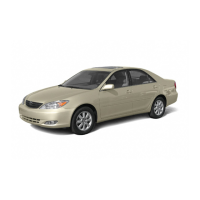
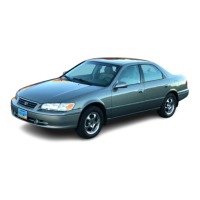
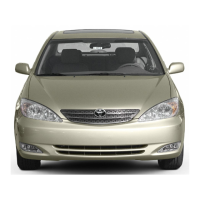
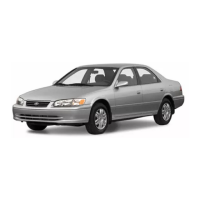
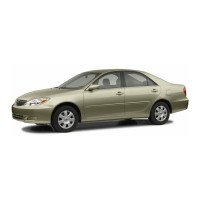
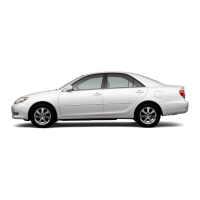
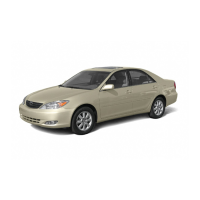

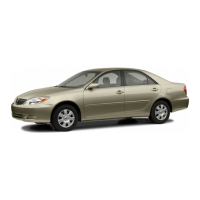



